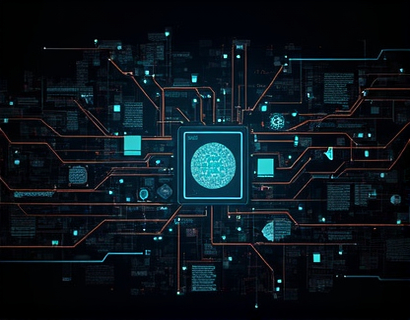Optimizing Business Conflict Resolution with Advanced Arbitration Technology
In today's fast-paced business environment, conflicts are inevitable. Whether they arise from internal disagreements or external disputes, the ability to resolve these conflicts efficiently and effectively is crucial for maintaining operational efficiency and fostering collaborative relationships. Advanced arbitration technology offers a transformative solution to traditional dispute resolution methods, streamlining the process and enhancing the overall work environment. This article delves into the benefits and functionalities of innovative software solutions designed to optimize business conflict resolution.
Understanding the Need for Advanced Dispute Resolution
Traditional dispute resolution methods, such as mediation and litigation, often involve lengthy processes, high costs, and significant emotional strain on all parties involved. In a business setting, these methods can disrupt operations, damage relationships, and divert resources from core activities. The need for a more efficient and effective approach to conflict resolution has led to the development of advanced arbitration technology. These tools leverage cutting-edge software to simplify and accelerate the resolution process, providing businesses with a robust framework to manage disputes.
Key Features of Advanced Arbitration Software
Advanced arbitration software is designed with several key features that make it an invaluable asset for businesses. These features include:
- Centralized dispute management: A single platform for tracking and managing all disputes, ensuring no case falls through the cracks.
- Automated workflows: Streamlined processes that guide parties through each stage of the resolution, reducing delays and errors.
- Real-time communication: Secure and controlled communication channels that facilitate timely and effective dialogue between parties.
- Data analytics: Insights and metrics to help organizations understand conflict patterns and improve prevention strategies.
- Customizable templates: Pre-designed documents and forms tailored to specific types of disputes, saving time and ensuring consistency.
These features collectively contribute to a more organized, efficient, and transparent dispute resolution process.
Enhancing Operational Efficiency
The primary benefit of advanced arbitration technology is its ability to enhance operational efficiency. By automating routine tasks and providing a structured framework, businesses can reduce the time and resources spent on conflict resolution. This efficiency gain translates into several tangible advantages:
Firstly, reduced resolution time means disputes are settled faster, allowing businesses to return to their core operations with minimal disruption. This is particularly crucial in industries where time is a critical factor, such as finance, manufacturing, and logistics.
Secondly, the cost savings are significant. Traditional methods often involve legal fees, travel expenses, and opportunity costs. Advanced arbitration software minimizes these expenses by providing a cost-effective alternative that still delivers high-quality outcomes.
Lastly, the streamlined process ensures that conflicts do not escalate, which can be a major drain on organizational resources. Early and effective resolution helps maintain a smooth workflow and preserves valuable employee time and energy.
Fostering Collaborative Relationships
Beyond operational efficiency, advanced arbitration technology plays a vital role in fostering collaborative relationships within and between organizations. The collaborative nature of the software encourages open communication and mutual understanding, which are essential for resolving conflicts amicably.
One of the key ways this is achieved is through real-time communication channels. These secure platforms allow parties to engage in constructive dialogue, share information, and work towards a mutually beneficial solution. The controlled environment reduces the risk of miscommunication and ensures that all parties are on the same page.
Additionally, the data analytics feature provides valuable insights into conflict patterns and trends. Organizations can use this information to identify common issues and develop proactive strategies to prevent future disputes. This forward-thinking approach not only resolves current conflicts but also builds a more harmonious and resilient organizational culture.
Case Studies and Real-World Applications
To illustrate the practical benefits of advanced arbitration technology, consider a few real-world applications:
In a large manufacturing company, a dispute arose over contract terms between two major suppliers. Using an advanced arbitration platform, both parties were able to communicate directly, submit evidence, and engage in negotiations within a structured timeline. The process was completed in a fraction of the time it would have taken through traditional litigation, and the relationship between the suppliers was preserved.
Another example is a multinational corporation that implemented an arbitration software solution to manage cross-border disputes. The centralized management system allowed for seamless coordination across different time zones and jurisdictions, ensuring that all disputes were handled consistently and efficiently. The company reported a significant reduction in resolution time and an improvement in inter-departmental collaboration.
Challenges and Considerations
While the benefits of advanced arbitration technology are clear, there are several challenges and considerations that organizations should be aware of:
First, the initial implementation cost can be a barrier for some businesses. However, the long-term savings and efficiency gains often outweigh the upfront investment. It is essential to conduct a thorough cost-benefit analysis to understand the return on investment.
Second, ensuring user adoption and training is crucial for the success of the software. Organizations should invest in comprehensive training programs to ensure that all stakeholders are comfortable and proficient in using the platform.
Third, data security and privacy are paramount. Advanced arbitration software must comply with relevant regulations and standards to protect sensitive information. Organizations should choose providers with a strong track record of security and compliance.
Future Trends in Dispute Resolution Technology
The field of dispute resolution technology is rapidly evolving, with several emerging trends that promise to further enhance the effectiveness of arbitration software:
1. Artificial Intelligence and Machine Learning: AI can be used to predict conflict outcomes, suggest resolution strategies, and even automate certain aspects of the process. This can further streamline operations and provide more accurate insights.
2. Blockchain Technology: Blockchain can ensure the integrity and transparency of the dispute resolution process by providing an immutable record of all transactions and communications.
3. Integration with Other Business Systems: Future software solutions will likely integrate seamlessly with existing business systems, such as CRM and ERP, to provide a more holistic view of the organization and its operations.
4. Mobile Accessibility: As mobile technology becomes more prevalent, arbitration platforms will increasingly offer mobile access, allowing parties to engage in the resolution process from anywhere.
Conclusion
Advanced arbitration technology represents a significant leap forward in business conflict resolution. By leveraging innovative software solutions, organizations can streamline dispute management, enhance operational efficiency, and foster collaborative relationships. While there are challenges to consider, the benefits far outweigh the costs, making it a worthwhile investment for any business looking to optimize its conflict resolution processes. As the technology continues to evolve, the future of dispute resolution looks brighter and more efficient than ever before.










































